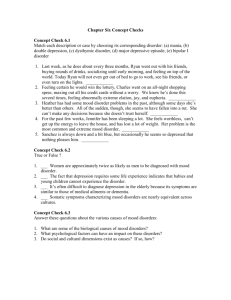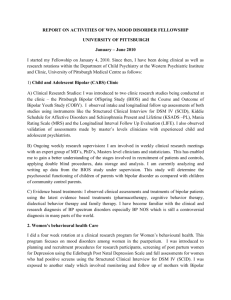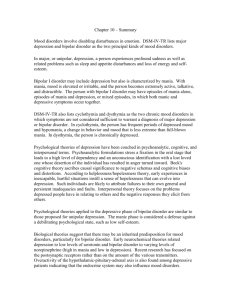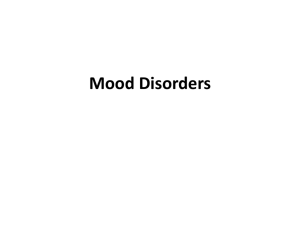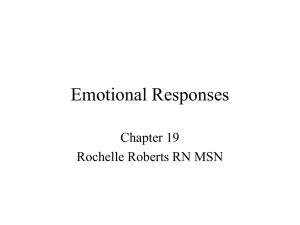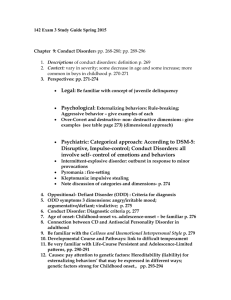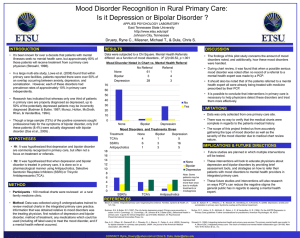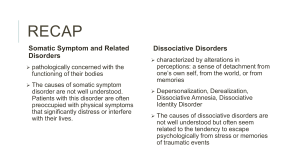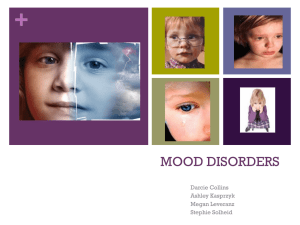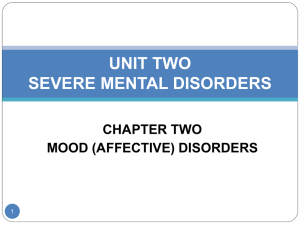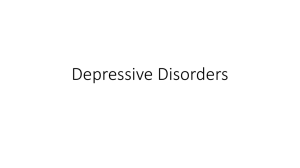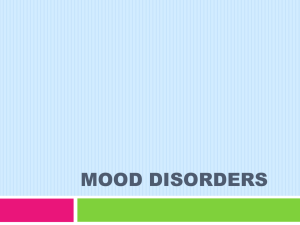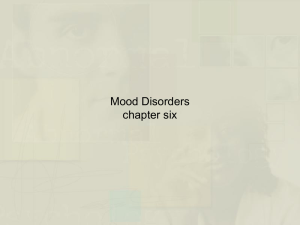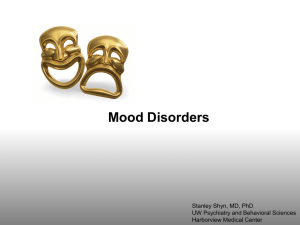MOOD DISORDERS
advertisement
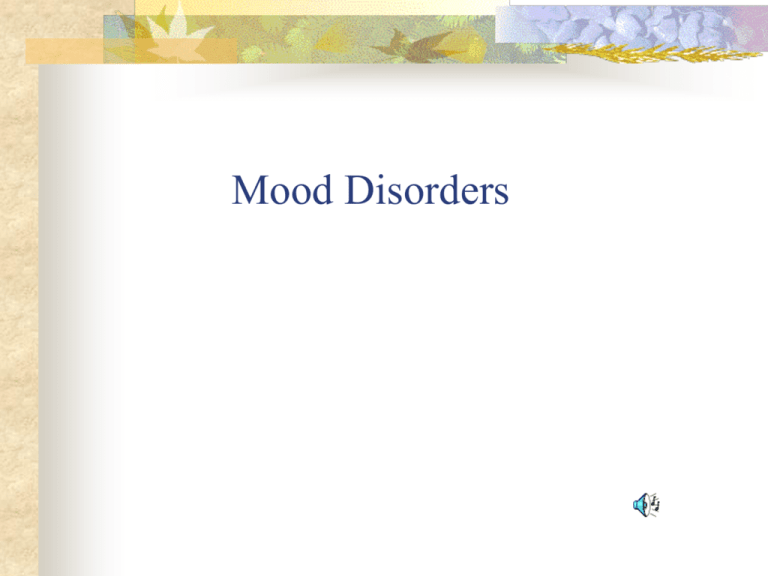
Mood Disorders ETIOLOGY Neurobiology Psychosocial Genetics Neurotransmission Neuroendocrine Psychoanalytic Cognitive Learned Helplessness Life Events Stress Personality Epidemiology 100 90 80 70 60 50 40 30 20 10 0 Men Females All Bipolar Major Dep Dysthym. Types of Mood Disorders Depressive Disorders Bipolar Disorders Mood Disorders due to a general medical condition Substance-Induced Mood Disorder Mood Disorders NOS Seasonal Affective Disorder Depressive Disorders Major Depressive Episode Major Depressive Disorder Dysthymic Disorder Seasonal Affective Disorder Depression NOS Symptoms of Depression If a person experiences five or more of the following symptoms each day during a two-week period or if these symptoms interfere with work or family activities, criteria for a major depressive episode are met: Prolonged sadness or unexplained crying spells Significant changes in appetite, sleep patterns Irritability, anger, worry, agitation, anxiety Pessimism, indifference Loss of energy, persistent tiredness Feelings of guilt, worthlessness Inability to concentrate, indecisiveness Inability to take pleasure in former interests, social withdraw Unexplained aches and pains Recurring thoughts of death and suicide Bipolar Disorders Bipolar I Disorder Bipolar II Disorder Cyclothymic Disorder Bipolar NOS Symptoms of Mania Heightened mood, exaggerated optimism and self-confidence Decreased need for sleep (less than three hours) without fatigue Grandiose delusions, inflated sense of self-importance Excessive irritability, aggressive behavior Increased physical, mental activity Racing speech, flight of ideas, impulsiveness Poor judgement, easily distracted, difficulty concentrating Reckless behavior without concern for consequences, such as spending sprees, rash business decisions, erratic driving, sexual indiscretions In severe cases, auditory hallucinations (hearing voices) or delusions (strong convictions about things that aren't true) Other Mood Disorders Mood Disorders due to a General Medical condition Substance Induced Mood Disorder Mood Disorder NOS Specifiers Mild, Moderate, Severe with or without psychosis Partial or Full remission, Chronic With Catatonic Features With Melancholic Features With Atypical Features With Postpartum Onset Longitudinal Course with or without full interepisode recovery With Seasonal Pattern With Rapid Cycling Postpartum Depression Feeling sad or crying a lot. Having no energy. Having headaches, chest pains, heart palpitations (the heart being fast and feeling like it is skipping beats), numbness, or hyperventilation (fast and shallow breathing). Not being able to sleep or being very tired, or both. Not being able to eat and weight loss. Overeating and weight gain. Trouble focusing, remembering, or making decisions. Being overly worried about the baby. Not having any interest in the baby. Feeling worthless and guilty. Being afraid of hurting the baby or yourself. No interest or pleasure in activities, including sex. Feeling restless or irritable. Treatment Pharmacology antidepressants Tricyclics Clomipramine(anafranil) Amitriptyline(elavil) Mirtazapine(remeron) Mood Stabilizers Phenelzine(nardil) SSRIs Fluoxetine(prozac) Sertraline(zoloft) Bupropion(wellbutrin) Lithium MAOIs 0.5-1.2 mEq/L acute treatment and maintenance toxic above 2.0 Carbamazepine Valproate acid Foods with High Tyramine Levels Aged Cheese, Yogurt Red Wine, Beer, Liqueurs Smoked or Pickled Foods, Pate Overripe fruit, avocados Yeast Fava Beans Certain Over the Counter Medications Side Effects and Lithium Toxicity Mild<1.5 mEq/L Moderate 1.5-2.5 Toxicity <2.5 Metallic taste Severe Diarrhea Nystagmus Fine hand tremor N and V Course tremors Nausea Ataxia Dysarthria Polyuria Blurred vision Confusion Polydipsia Tremors, twitching Halluciations Diarrhea Slurred speech Oliguria Fatique Tinnitus Convulsions Dizziness Coma Uncoordination Death Treatment Electroconvulsive Therapy Phototherapy Family Intervention Group Intervention Psychotherapeutic Intervention Cognitive Behavioral Interpersonal Psychodynamic Phototherapy Electroconvulsive Therapy Indication- Major Depression with Psychosis, Mania Action- Unknown. Thought to increase levels of norepinephrime and serotonin the brain. Contraindication: Increased intracranial pressure High Risk: Recent MI or CVA, aneurysm, severe hypertension, respiratory infection, cardiac arrhythmias, thrombophlebitis, narrow-angle glaucoma Side effects: Temporary memory loss, headache and confusion Medications: Atropine, short acting anesthetic and muscle relaxant given IV Pre and post care as a surgery patient Nursing Diagnosis Depression Risk for Violence Self-care deficit Sleep alterations Fatigue Constipation Impaired social interactions Sexual Dysfunction Knowledge deficit Mania Self-care deficit Impaired communication Altered thought processes Self-esteem disturbances Noncompliance Altered family The End
